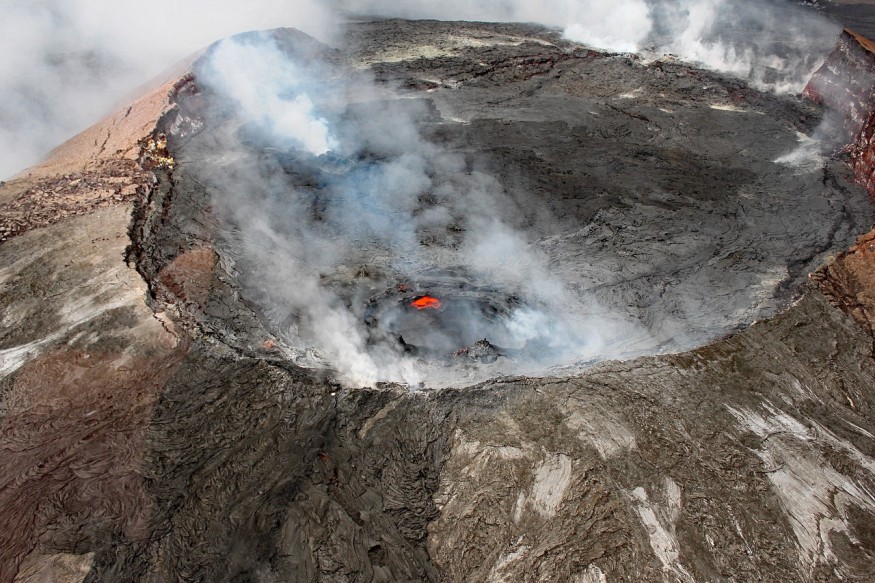
The Kilaeua volcano in Hawaii has been exhibiting increased volcanic activity once more.
Heightened Activity Observed
Since early January 31, the volcano's summit has been seeing increased ground deformation and earthquakes. This was an update given by the Hawaiian Volcano Observatory of the USGS.
Due to these observations, the alert level of the volcano has gone up to orange from its previous status of yellow. This has prompted experts to closely monitor the volcano.
The update notes that they are presently unable to conclusively say that the heightened activity could result in an eruption. The activity stays under the surface. However, an eruption of the summit region of the volcano away from infrastructure and within Hawaii Volcanoes National Park is still a possibility.
At present, seismic activity surrounding the volcano is taking place to its caldera's site or the depression site that shortly formed after the eruption and collapse of a volcano. If a volcanic eruption were to take place, it is likely to be confined to the crater of the Halema'uma'u or the caldera's south.
Hawaii's Kilauea Volcano
Such a kind of activity is common at the volcano. Kilauea is a remarkably active volcano that has been regularly erupting since 1983. While its eruptions rarely pose a risk to the communities that surround it, Kilauea is still considered one of Hawaii's most dangerous volcanoes. This is because it produced immensely destructive blasts in the past, though these were rare.
In 2018, a big eruption triggered massive lava flows in the Puna District nearby. This led to the destruction of over 700 homes from May up until August. The national park's summit area drastically altered as the volcano caused tens of thousands of quakes. This was the volcano's largest eruption in roughly two centuries. The majority of volcanic eruptions are within the limits of a crater, implying that they are not very destructive.
According to the USGS, carbon dioxide, sulfur dioxide, and water vapor are released continuously during Kilauea eruptions. These could result in volcanic smog. Vog could dampen the quality of air and lead to health hazards. So far, readings of sulfur dioxide gas have stayed low.
At present, current activity surrounding Kilauea is entirely confined in the Hawaii Volcanoes National Park. This means that it is unlikely to pose danger to the communities that surround it.
According to the update, the HVO is constantly communicating with the park's authorities as the situation goes on. The HVO continues to monitor the activity closely. If there are any significant changes in activity, a volcanic activity notice will be given. Visitors and residents must remain informed and follow the guidelines of Hawaii Volcanoes National Park and the County of Hawaii.
RELATED ARTICLE : Grindavik at Risk of 'Crack Collapse' With Lava Pouring From Fissures After Volcanic Eruption in Iceland
Check out more news and information on Environment & Climate in Science Times.










